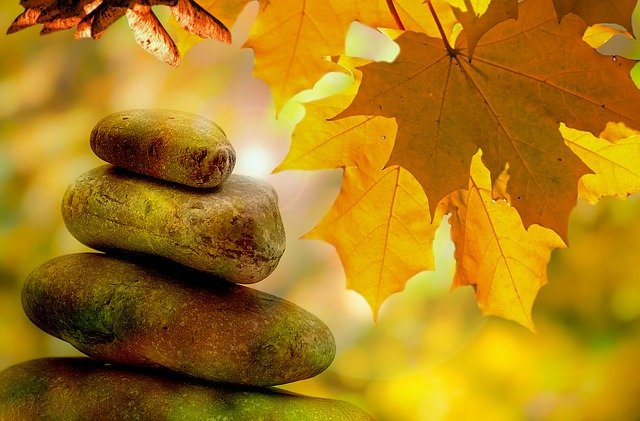Untitled 1
Difference between Asanas and Mudras

Ancient texts on Kundalini Yoga describe various yoga practices such as
Asana, Pranayama, Mudras, and Meditations. Note that in this context Mudras
doesn't mean hand mudras. Mudras here means those that are specifically
mentioned in Kundalini yoga literature. Beginners often get confused between
Asanas and Mudras. A common confusion is this - Sarvangasana is considered as
Asana whereas Viparitakarani is considered as a Mudra. From body posture point
of view both look quite similar but still one is an Asana and the other is a
Mudra. Even the other Mudras such as Maha Mudra and Maha Vedha are in a way
physical postures. But they are called Mudras. Why so?
In order to understand this difference in the classification you need to
understand the subtle principles on which these two - Asanas and Mudras - work.
So, let's discuss them in brief.
In almost all the ancient yoga texts Asanas are primarily mentioned in the
context of attaining steadiness of the body. They are also used for disease
removal. So, physical body fitness is the main aim while practicing Asanas. At
the end of culmination of the Asanas one is expected to attain what is known as
Asana Siddhi or Asana Jaya. Asana Siddhi when the practitioner
can maintain a posture for 12 hours at a stretch. Asana Siddhi is usually
attained for meditative postures such as Siddhasana, Padmasana, Swastikasana and
Vajrasana. No matter what Asanas confine themselves to physical body fitness for
the purpose of higher practices.
On the contrary, Mudras are use specifically for awakening the dormant
Kundalini Shakti. Although they too have health benefits that's not the primary
goal. Their main utility is to awaken the sleeping Kundalini. Unlike Asanas
where core focus is physical body, Mudras focus on Prana. This is the big
difference between the two. Without Prana and its specific pathway Mudras are
rendered useless. Consider Sarvangasana and Viparitakarani. The former is an
Asana and hence Pranic force or activation is not expected while practicing it.
However, the latter is a Mudra and must be done with Pranic focus, force and
activation. The exact "inner" technique of Viparitakarani should be learned from
an expert. Mere external posture will confine the benefits only to physical
body. Thus it can be said that the practice of Mudras should be undertaken only
after certain level of Pranic purification and control is achieved by the
practitioner. That's why most of the Hatha textx describe Asanas first, then
Pranayama and then Mudras. This sequence is not arbitrary. It has a specific
purpose as discussed above.
Asanas are said to be 84 lakh in number. It is said in ancient texts that
only Lord Shiva knows all of them. Out of these 84 lakh only 84 are commonly
known to the yoga fraternity. Texts such as Shivasamhita detail only four
meditative postures whereas texts such as Hathayoga Pradipiks and Gheranda
Samhita describe a few more. On the other hand Mudras are quite small in number
and out of the ones mentioned in scriptures only 10-12 are considered the most
important. They include Maha Mudra, Moolabandha, Uddiyanabandha,
Jalandharabandha, Viparitakarani, Mahabandha, Mahavedha, Shaktichalini, and
Khechari (and a few others). One more Mudra often excluded from this list but
considered supreme to all of them is Shambhavi Mudra. So, the point is Mudras
are for Kundalini awakening and Sushumna piercing. Mudras push the Kundalini
into the Sushumna and then to the "Brahma's Canal" or Brahmarandhra.
Also note that ancient texts don't distinguish between Bandhas and Mudras.
Bandhas are but Mudras. Modern teachers classify them separately since Bandhas
are also applied with Pranayamas.
If you wish to follow the classical Yoga texts in your personal practice, it
is recommended that you be comfortable with Mudras in the following sequence
rather than directly jumping to them:
- Asanas and establish the practice in your daily life.
- Shuddhi Kriyas such as Dhauti and Basti.
- Proper diet.
- Pranayama without Kumbhaka and Bandhas.
- Pranayama with mild Kumbhaka but no Bandhas.
- Learn the three Bandhas (Moola, Uddiyana, and Jalandhara) as separate practices.
- Pranayama with Kumbhaka as per capacity integrated with Bandhas.
- Start with other Mudras
Take your own time at every step. Do not hurry. It's best to learn Mudras
under the guidance of an expert. You can learn basic Yoga postures from Videos
and books. This is difficult with Mudras because Mudras also require an "inner
working". The subtle details such as Pranic path, Pranic intensity, Chakras
involved, and duration are difficult to understand in the absence of personal
guidance. Some Mudras are powerful practices in themselves and are best
practiced in spiritual seclusion.
Bipin Joshi is an independent software consultant and trainer by profession specializing in Microsoft web development technologies. Having embraced the Yoga way of life he is also a yoga mentor, meditation teacher, and spiritual guide to his students. He is a prolific author and writes regularly about software development and yoga on his websites. He is programming, meditating, writing, and teaching for over 27 years. To read more about him go here. More details about his Kriya and Meditation online course are available here.